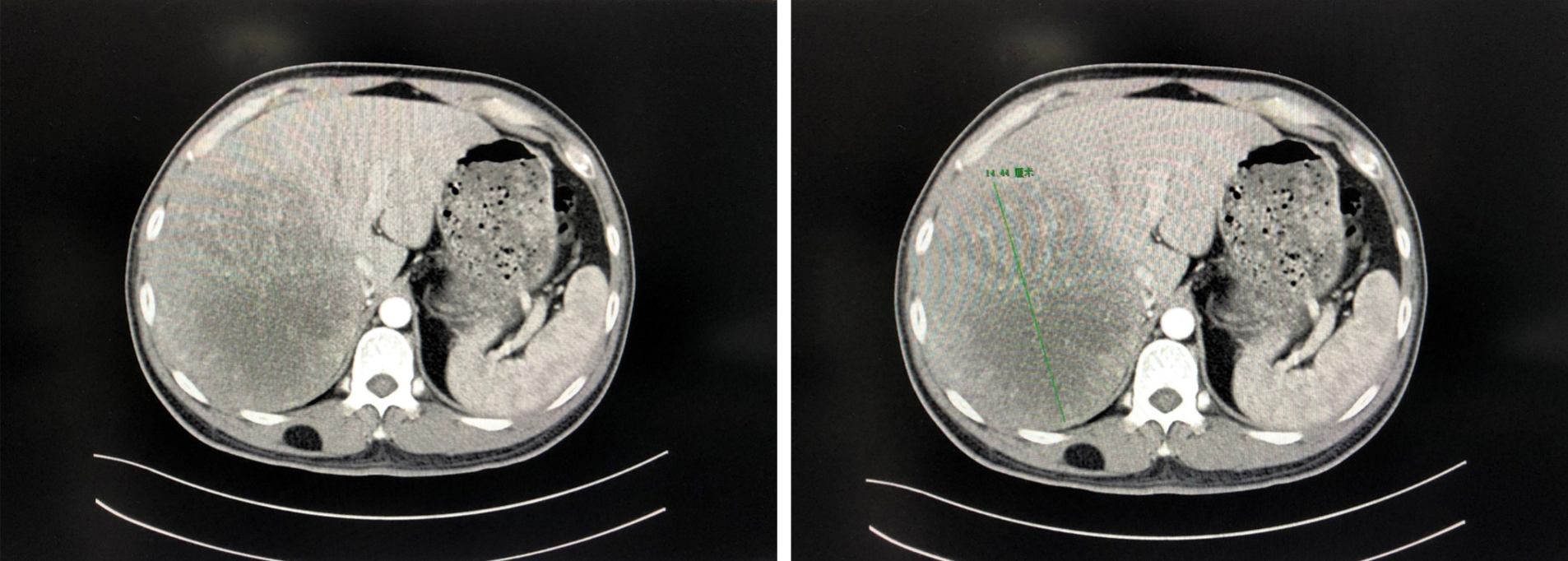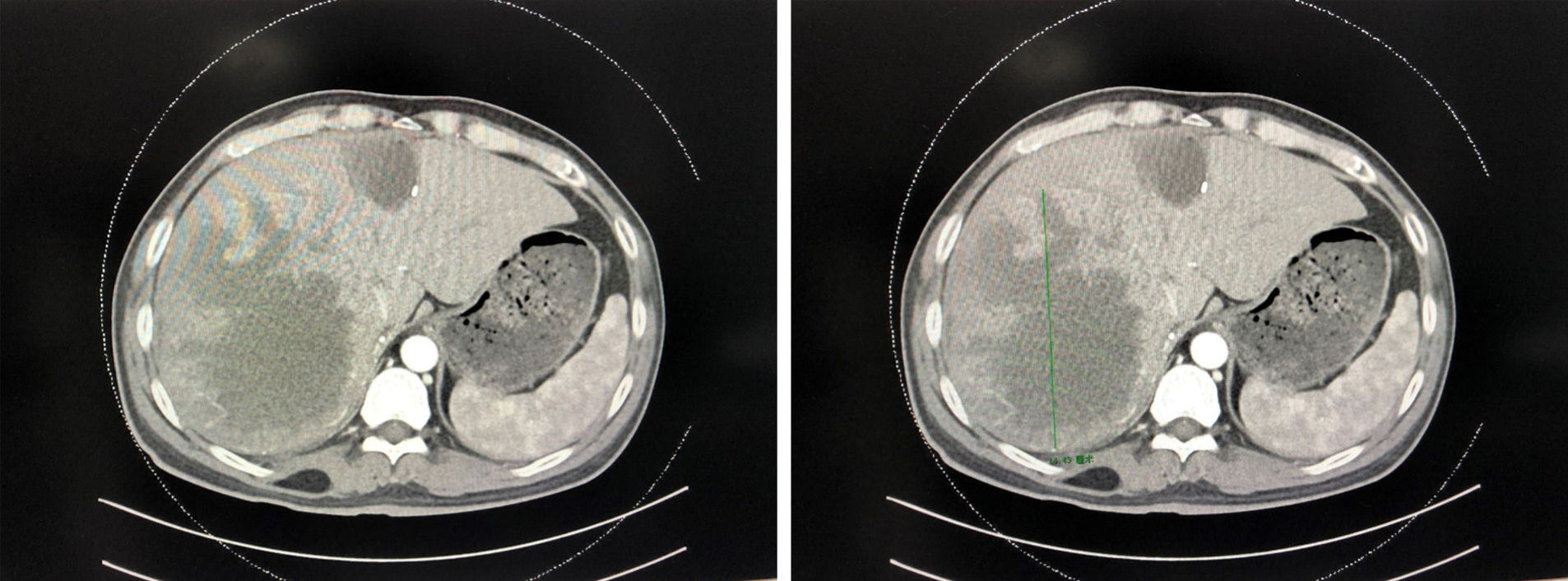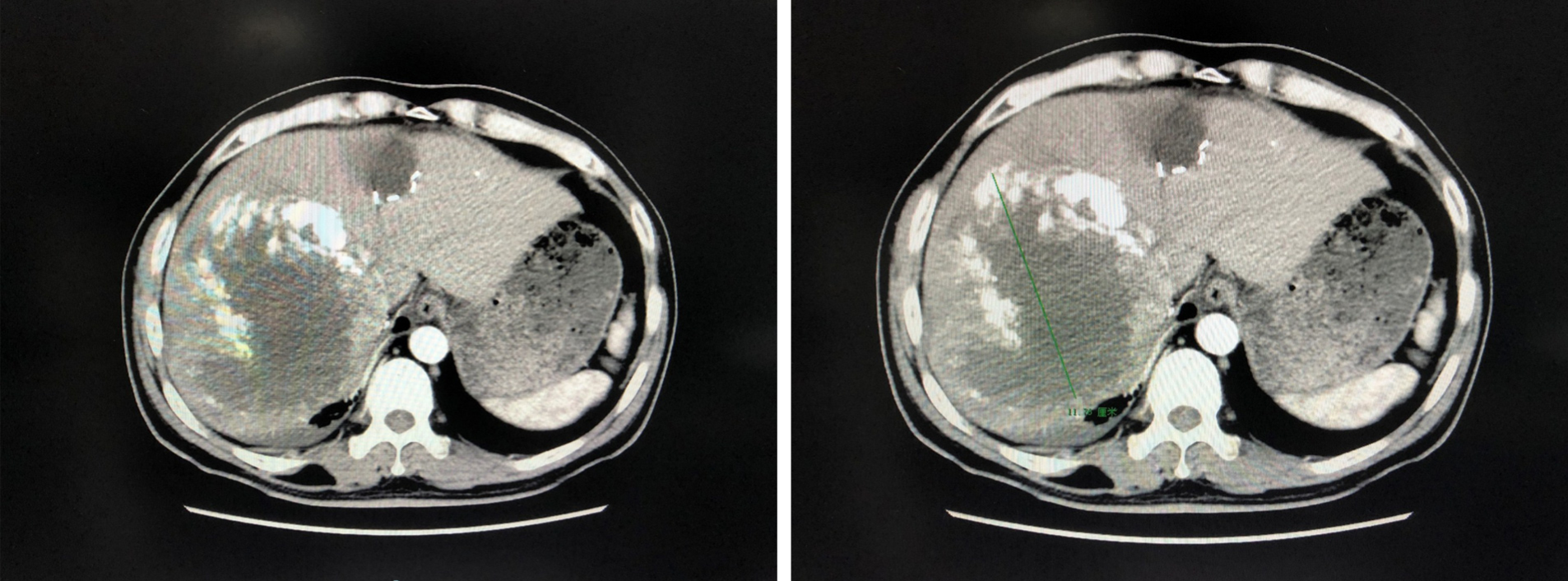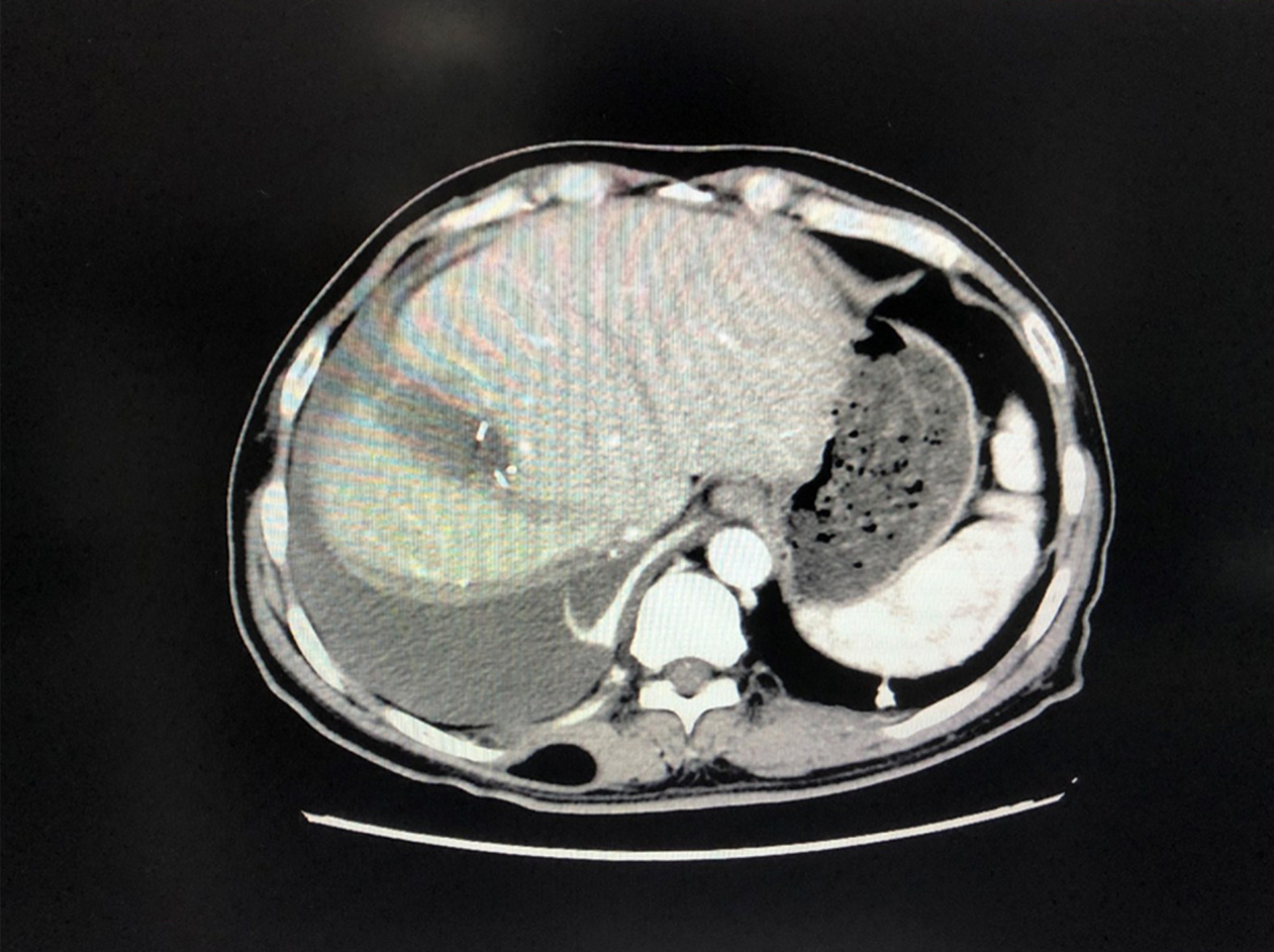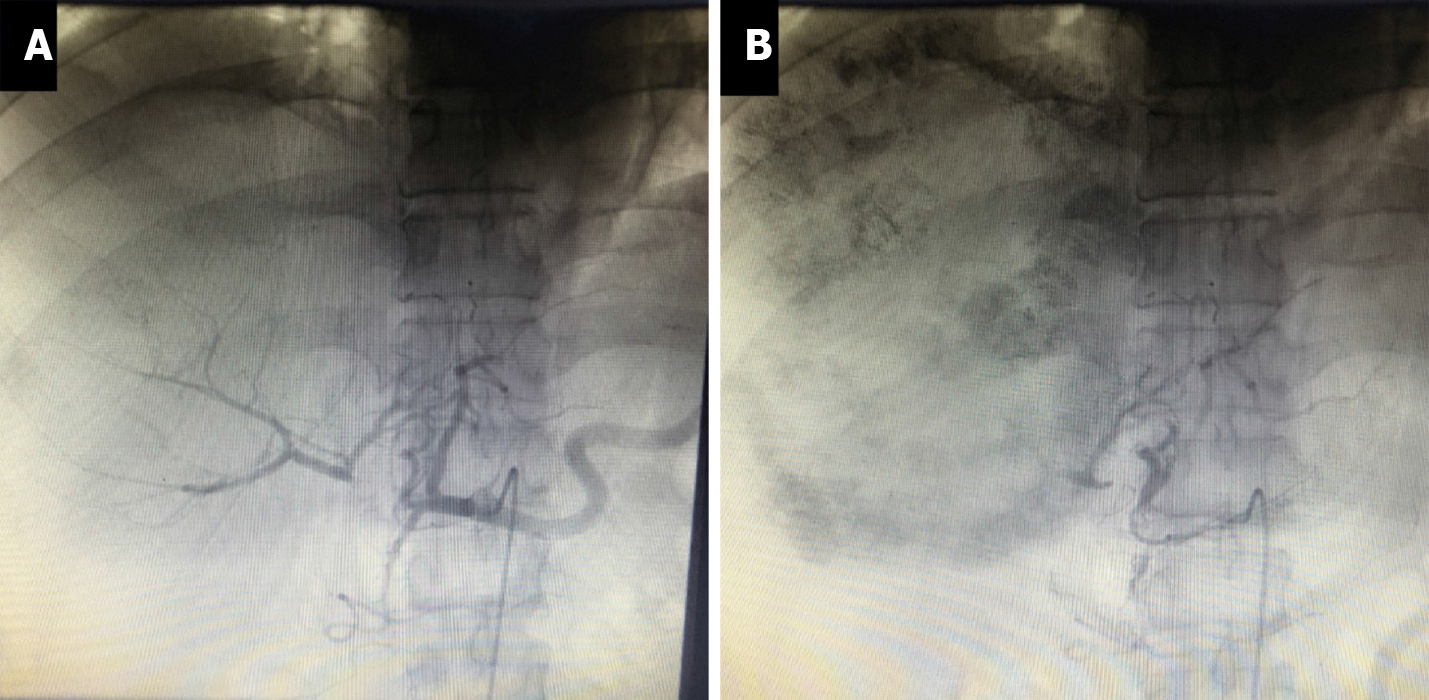Copyright
©The Author(s) 2021.
World J Clin Cases. Oct 26, 2021; 9(30): 9151-9158
Published online Oct 26, 2021. doi: 10.12998/wjcc.v9.i30.9151
Published online Oct 26, 2021. doi: 10.12998/wjcc.v9.i30.9151
Figure 1 Pre-operative enhanced computed tomography scan of the upper abdomen.
A large mass in the right lobe of the liver, centered on the right posterior lobe, with the larger section measuring about 14 cm × 10 cm × 14 cm. The right hepatic vein mostly ran along the edge of the lesion, and the right hepatic vein and right portal vein were affected by pressure.
Figure 2 At 53 d after the initial operation.
No significant changes in patient’s left or right liver.
Figure 3 At 93 d after the initial operation.
A large soft tissue mass in the right lobe of the liver, with dot-like or sheet-like high-density shadows, slightly smaller than previously. Other imaging findings were similar to before.
Figure 4 At 2 mo after the initial operation.
A small amount of fluid in the operation area and no obvious abnormalities.
Figure 5 Hepatic angiography before and after intervention.
A: The right hepatic artery was ligated, and the right liver tumor was mainly supplied by the middle hepatic artery and to a lesser extent by the left hepatic artery via the collateral circulation; B: The tumor-supplying branches of the middle and left hepatic arteries were embolized.
Figure 6 Postoperative right liver and right liver tumor specimens.
A: Incisal margin view; B: Left side view; C: Diaphragmatic face view.
- Citation: Feng GY, Cheng Y, Xiong X, Shi ZR. Conversion therapy of hepatic artery ligation combined with transcatheter arterial chemoembolization for treating liver cancer: A case report. World J Clin Cases 2021; 9(30): 9151-9158
- URL: https://www.wjgnet.com/2307-8960/full/v9/i30/9151.htm
- DOI: https://dx.doi.org/10.12998/wjcc.v9.i30.9151













